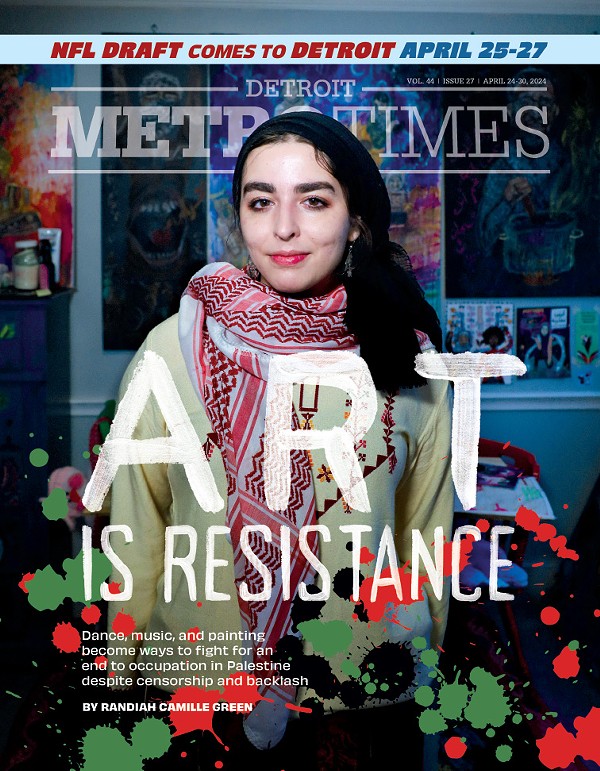The longer nights, cooler days and fiery displays of autumn leaves augur the arrival of All Hallows’ Eve., the time when the veil between this world and the next is most transparent.
If typical Halloween viewing fare such as Dracula, Frankenstein and The Wolf Man bring on that “been there, done that” syndrome, some excellent alternatives are films based on Japanese ghost stories. There are no hokey horror or slash-and-gore thrills here. These eerie tales of hauntings and supernatural occurrences unsettle by creating an atmosphere of uncertainty and ambiguity, where everyday reality is susceptible to the eruption of otherworldly phenomena.
Consider the sheer variety of supernatural beings that populate these ghostly legends. Obake, which means “transforming thing,” can refer to anything strange or uncanny, while yurei are spirits of the dead that haunt the living, usually seeking revenge. Oni are terrible demons or ogres, and foxes are depicted as wily shape-shifters.
But the key to understanding these stories is the concept of on, the web of social obligations and duties in which everyone in Japan is enmeshed. When these responsibilities are unfulfilled or violated, the resulting imbalance opens the door to malevolent entities.
After a peripatetic and impoverished youth, the eccentric Greek-Irishman Lafcadio Hearn (1850-1904), who made his name as a journalist in Cincinnati and New Orleans, found his way to Japan in 1890 where he remained for the rest of his life. Hearn was fascinated by all things weird and bizarre, and his renditions of ghostly Japanese tales introduced them to Western readers.
In 1964, director Masaki Kobayashi made an exquisite film called Kwaidan, based on stories culled from Hearn’s book of the same title. The film consists of four separate tales, one of which is “The Woman of the Snow,” based on the theme of the nonhuman wife.
In this tale a young man named Minokichi and his elderly companion are unexpectedly caught in a severe snowstorm. After they both collapse, Minokichi sees a beautiful woman with a pale white face kneel over his companion and blow her frosty breath over his face, killing him instantly. She comes to do the same to Minokichi, but takes pity and spares him after eliciting a promise on pain of death that he never reveal to anyone what he has seen.
One year later, a beautiful woman named Yuki arrives at Minokichi’s village and they marry. Yuki is an ideal wife and bears him three children, but she never seems to age, and as the years pass the other village women marvel at her eternal youthfulness. One quiet evening, Minokichi looks at Yuki and is reminded of the Snow Woman, and tells her what happened on that night so long ago. The Snow Woman knows instantly he has broken his vow of silence, for of course she and Yuki are one and the same.
Another story told here is that of “Hoichi the Earless.” Hoichi is a blind biwa player (a stringed instrument similar to a lute) who resides in a monastery and is especially skilled at performing epic recitations of the Battle of Dan-no-ura, where the Heike clan completely perished at the hands of the Genji clan many hundreds of years ago.
One night Hoichi is summoned to perform before a prestigious lord and his noble entourage. They are so pleased that the performance becomes a nightly ritual. It is not long before the monks are wondering where Hoichi is going every night. They soon discover his illustrious audience consists of the ghosts of the entire Heike clan, and his performances have been taking place in the cemetery. In order to protect Hoichi, the monks cover every square inch of his body with sacred text. Everywhere, that is, but his ears …
In Nagisa Oshima’s In the Realm of Passion (1978), Seki and her younger lover Toyogi conspire to kill Seki’s husband, the simple, hard-working rickshaw puller Gisaburo. After performing the grisly deed, the couple unceremoniously dispose of Gisaburo’s body in a remote well, but soon his pale shade is appearing regularly in Seki’s courtyard. Though the film fails to make the illicit lover’s relationship seem inspiring enough to compel murder, the scenes involving the ghost are visually striking.
Kaneto Shindo’s powerfully intense film, Onibaba (1963), is set in feudal Japan. With all the men away at war, an old woman and her daughter-in-law survive by luring lone samurai to a camouflaged pit. Once they fall in, they are easily killed and their armor can be traded for rice.
One day, the young woman begins an irresistibly passionate affair with a young man who has returned from battle. Feeling her own survival threatened by this development, the older woman dons a hideous mask she has acquired from one of her samurai victims and looms up before the younger woman as she runs through the night to meet her lover, frightening her into spending her evenings at home. But something goes awry — and one day the old woman is unable to remove the mask.
Akira Kurosawa’s Dreams (1990) is another film composed of numerous vignettes, many with supernatural themes. In “Sunshine Through the Rain,” a small boy is warned by his mother to avoid intruding upon the wedding ceremonies of the foxes who live in the forest. Ignoring her, he observes their stately procession, enacted by masked and beautifully costumed actors. He steals away unharmed, but finds he is unable to return home after his transgression.
Subtle, poetic and poignantly haunting, these films disturb not with high-tech thrills and chills, but by pointing out the ghostly, impermanent nature of all reality.
Deborah Hochberg writes about film for the Metro Times. E-mail her at [email protected]




